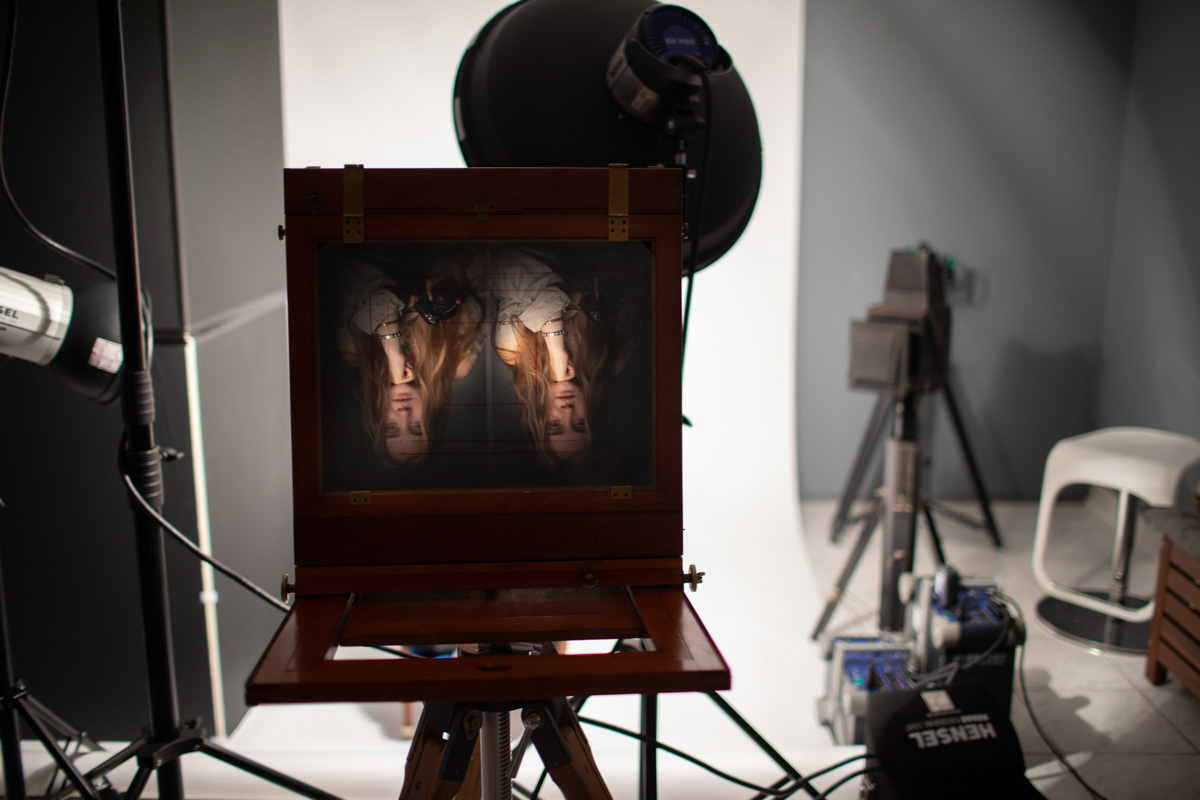Hands down, this one of the most impressive — if not the most impressive — wet plate photography projects you’ll see from Markus Hofstaetter.
If you’ve been following the work of Markus Hofstaetter with us for some time now, you’ll know that you can trust him to come up with the craziest and most surprising wet plate photography projects. Well, he’s at it again with his latest work: modifying one of his ultra large format wet plate cameras to shoot stereo photos. If you’ve ever wondered what else can be done with wet plate photography, prepare to be wowed by this amazing project from start to finish!
“I just finished one of the most energy-consuming projects I ever did,” the Austrian portrait and wedding photographer was quick to tell us when he shared the project. And boy, it does look nothing short of that as he shares in his blog post and video below:
During a visit to the DIE 3Dimensionale stereo photography exhibit by the The Photographische Gesellschaft in Vienna, Markus spotted a stereo wet plate camera and toyed with the idea to shoot with one. Those of us who are familiar with his work will already have thought that involves some building or camera tinkering. That’s exactly what he sought out to do. First, he modified his existing camera by building two lens boards that can be moved with a plate to keep the open space light-sealed, a tilt mechanism, a shutter, and partition boards inside the bellows.
He also needed to find a second Petzval lens, which he thought was a great idea but also proved to be one of the biggest challenges of his project. Finding one that focuses on the same spot as his existing one was a pain and took forever! “I remember when I talked with a shop assistant in a vintage camera shop in Vienna about my project, he just said he is happy he is not doing it. He was so right…”
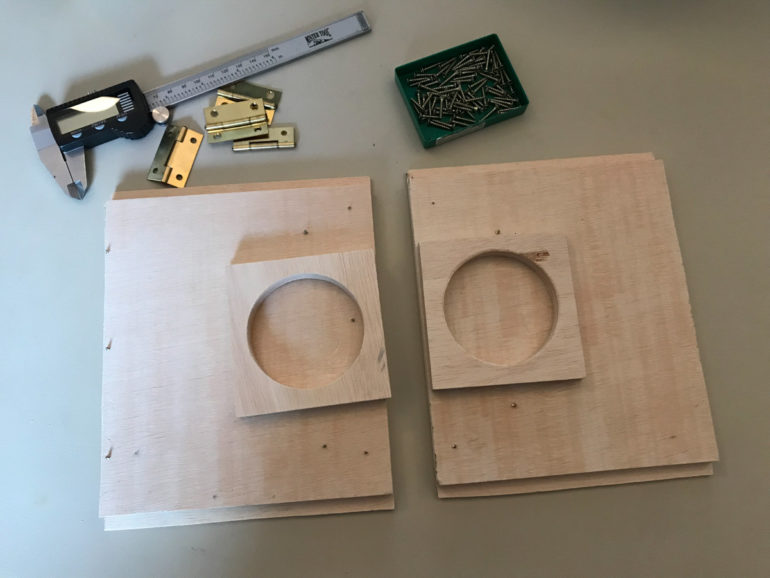
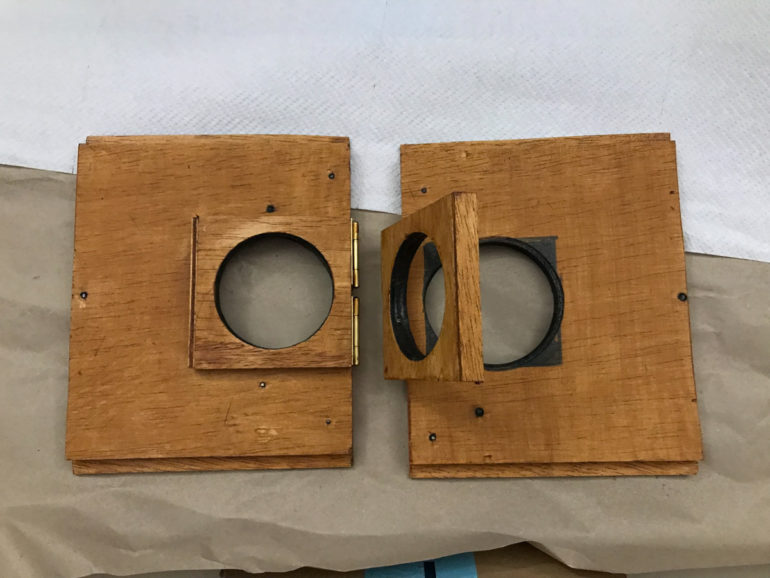
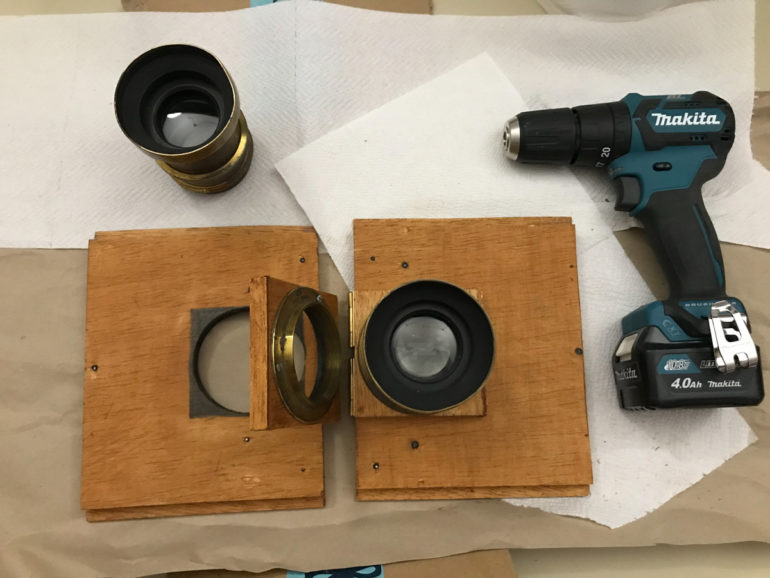
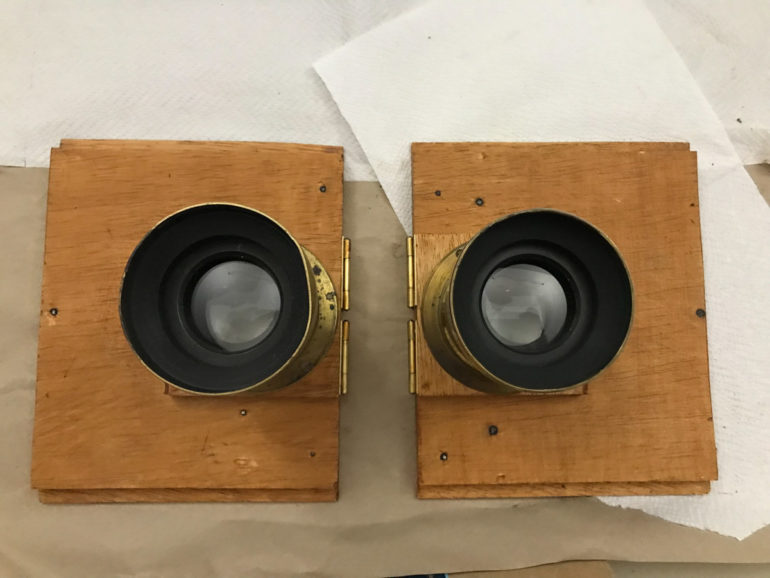
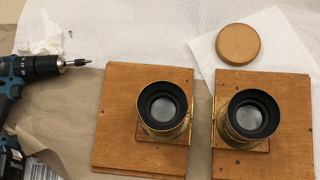
Once he had most of the parts he needed for his camera, he started working on the movable lens boards. It was one of the easy tasks as he already built some boards prior. But he also needed to create the tilting mechanism for the lenses, for which he experimented with different hinges, screws, and wooden boards. Next was the shutter that could simultaneously expose both lenses and also adjust to the movable lens boards. For this, he glued iron bars on the lens boards and mounted his shutter magnets on it. This allowed him to easily mount and dismount his shutter with different lens board positions.
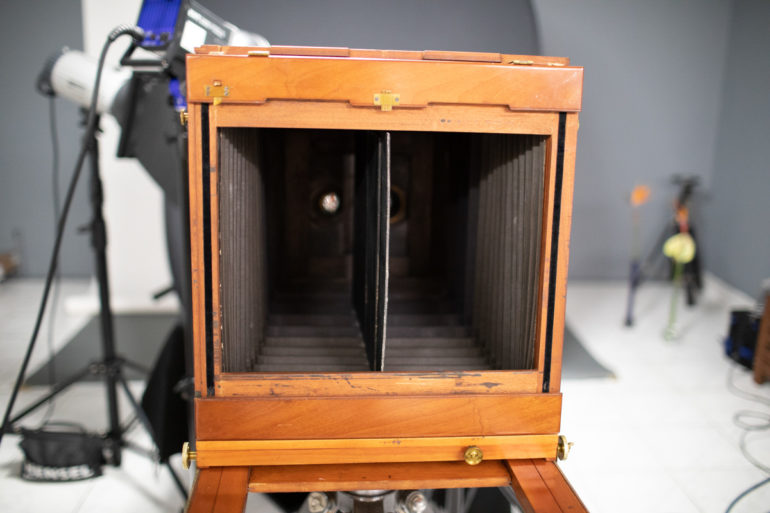
One last important thing was to create the inner separation for the camera, to create two images on the plate and the ground glass. Using balsa wood, he made a system that can be connected together. He also used a thin black sticky tape to make small bellows for the tilting lens boards.
To test his masterpiece, he shot three subjects: first, of another wet plate camera, then some macro flowers, and finally a portrait. Check them out: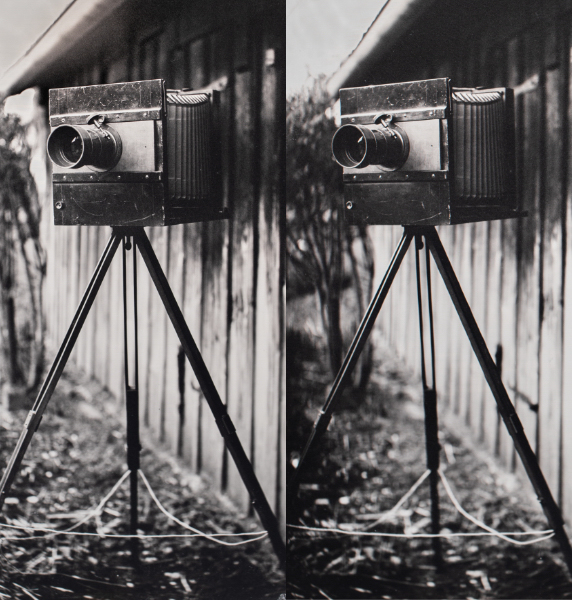
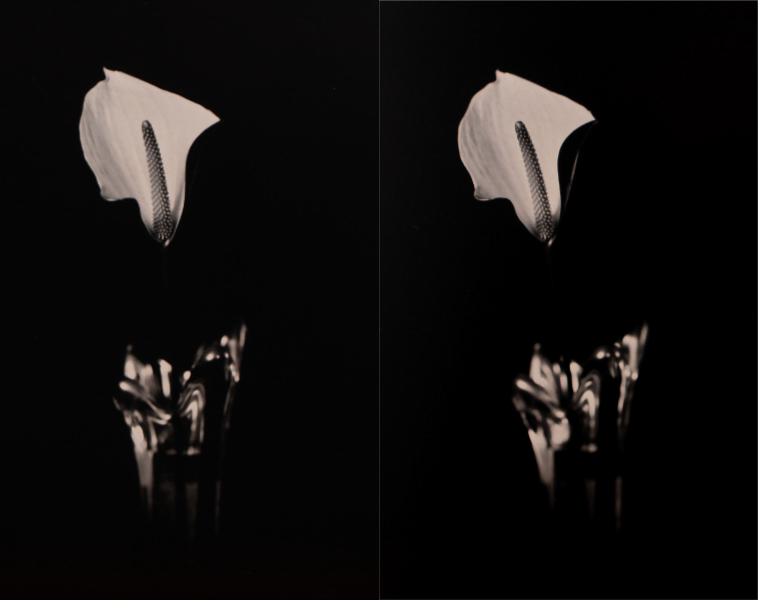
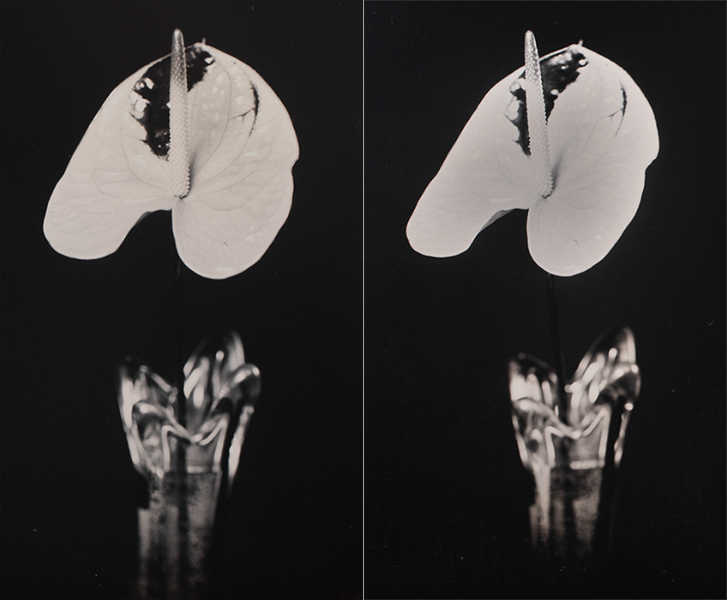
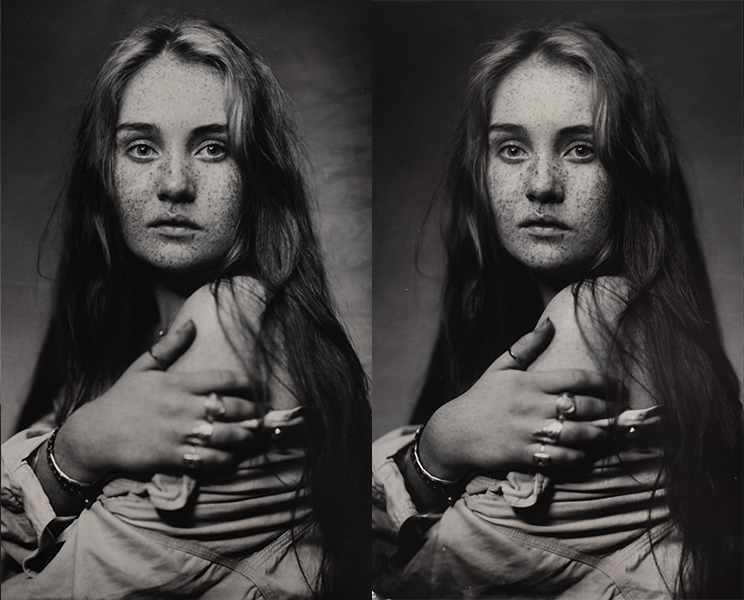
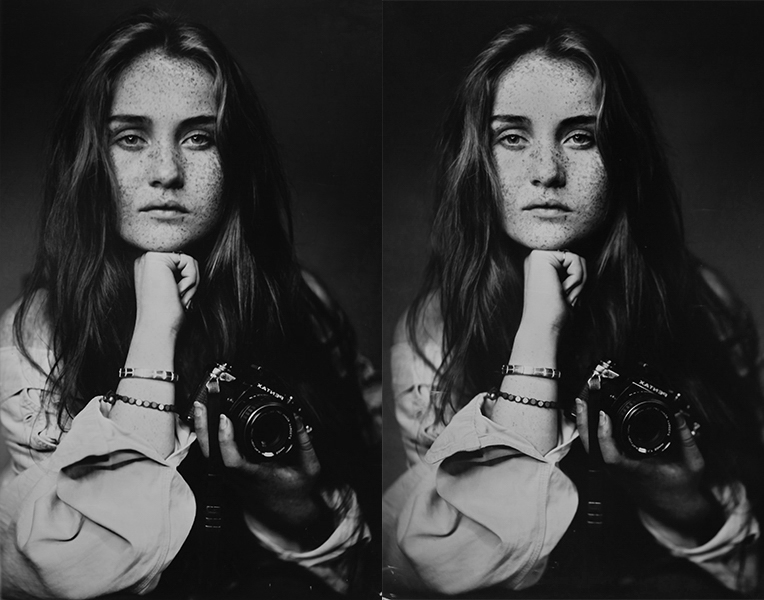
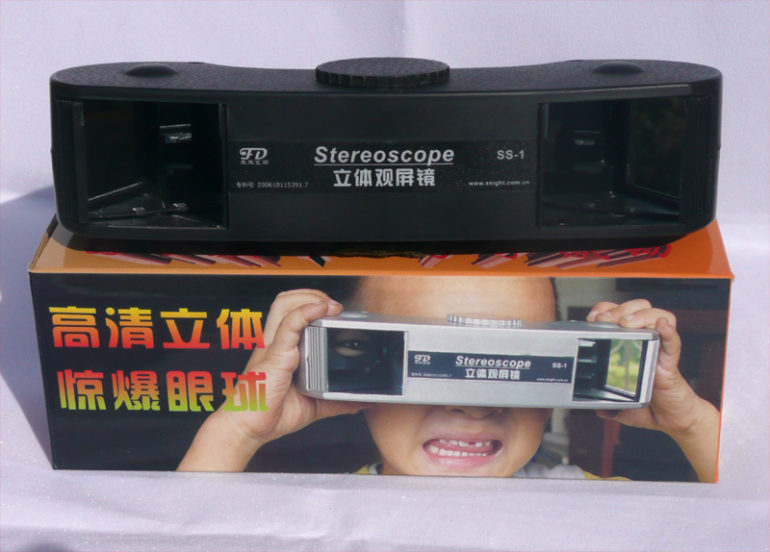
You’d need a stereoscopic viewer like the one above to see the side-by-side photos in 3D, but Markus has also done some GIFs to demonstrate the effect: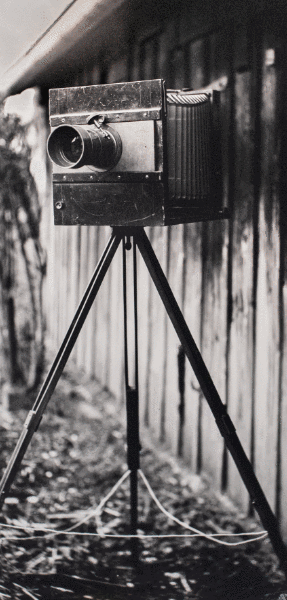
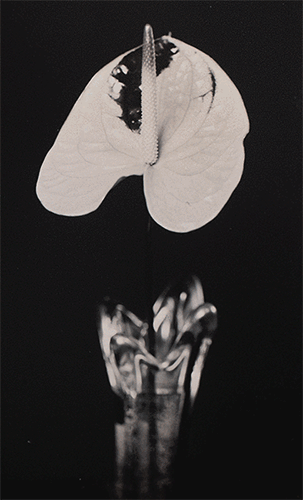
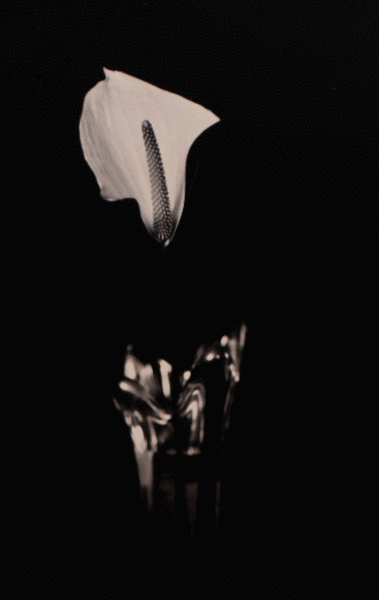
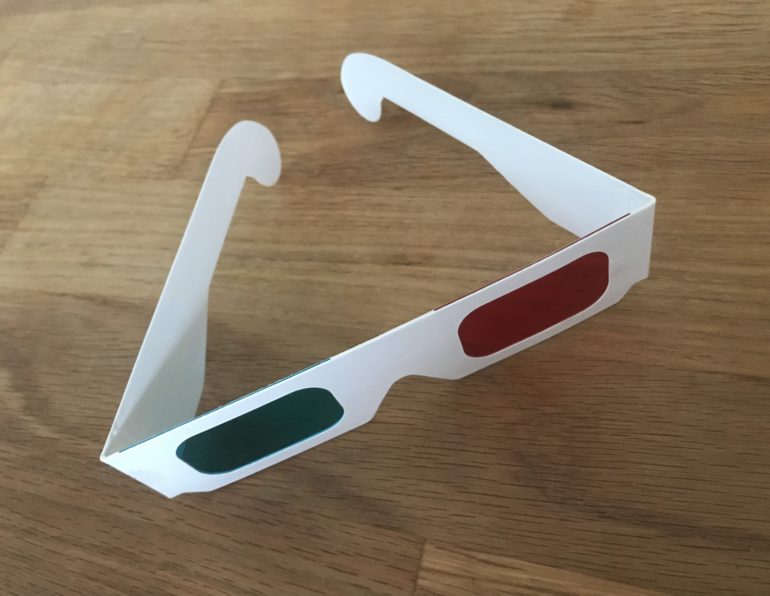
Or, alternately, if you have a pair of cyan and red glasses like the one above, you can also use it to view the anaglyph versions below:
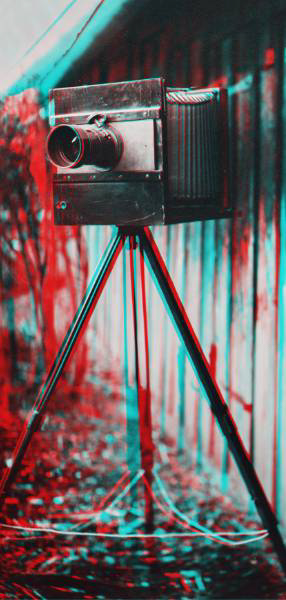
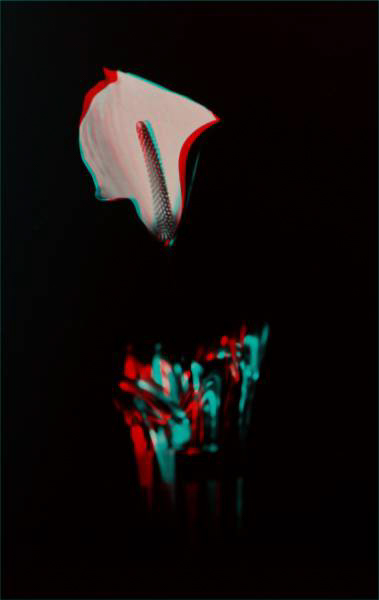
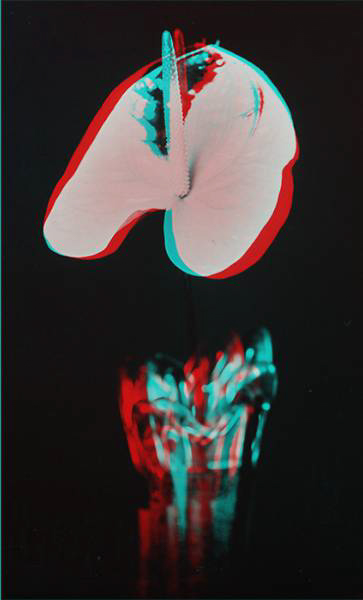
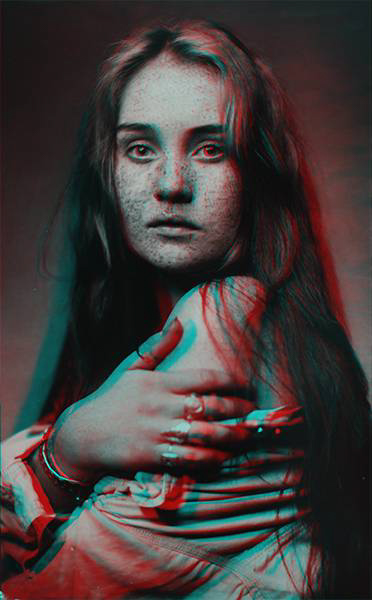
I couldn’t resist asking Markus, at which point in the building process did he realize that it was going to be a lot more difficult than he expected. To this, he noted a number of issues from both the research and building work:
“A friend suggested to read a book he had at home. It took me a while to read and understand this book about stereographic photography. This was nothing I could do in a few hours. So I read it during a vacation in Portugal for about two weeks every evening. I had to read it again and again until all the strings connected in my head. This was the first moment when I realized how complex this topic is. And how much care you have to take to produce a 3D image and not a flat wallpaper.
“As I started to search for a second Petzval lens I ran into the first big frustration. To find a second one that focuses on the same spot was a huge challenge. I just could have mounted a lens to an adapter and move it further away, so it focuses on the same spot as the other one, but then you have a larger projection on the plate. That means two different images and not 3D.
“After I found a second lens that focused similar to the first one, I ran in the next issue: they didn’t expose the same amount of light. That means I had to stop one a little further down. This was not a big issue, but still something to consider. During the preparation of the first 3D shot I realized how difficult it is to find the right stereo basis (the distance between the two lenses). This defines how much of a 3D effect you get. And for macros, there is the tilt mechanism I built, too.
“I think you get the idea, that there was not just one point where I realized this is more difficult. There came point after point where I realized there is so much more to stereo wet plates. Combine this with the wet plate process for 30x40cm plates, there was a lot to handle for me. The building process did take some time, but I love building things, so this was not the energy-consuming part. It was all the little things I mentioned above, that kept stopping me to finally start. At some point I was so frustrated, that I really had to conquer my weaker self to go on with this project.”
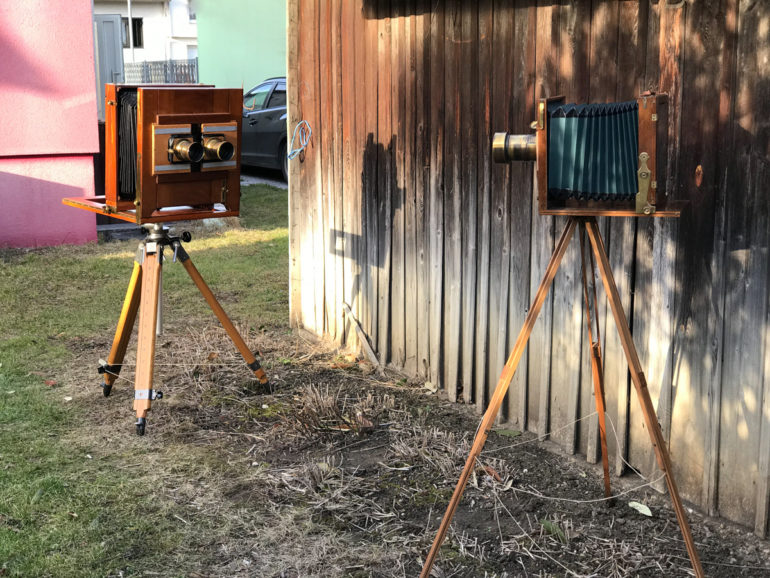
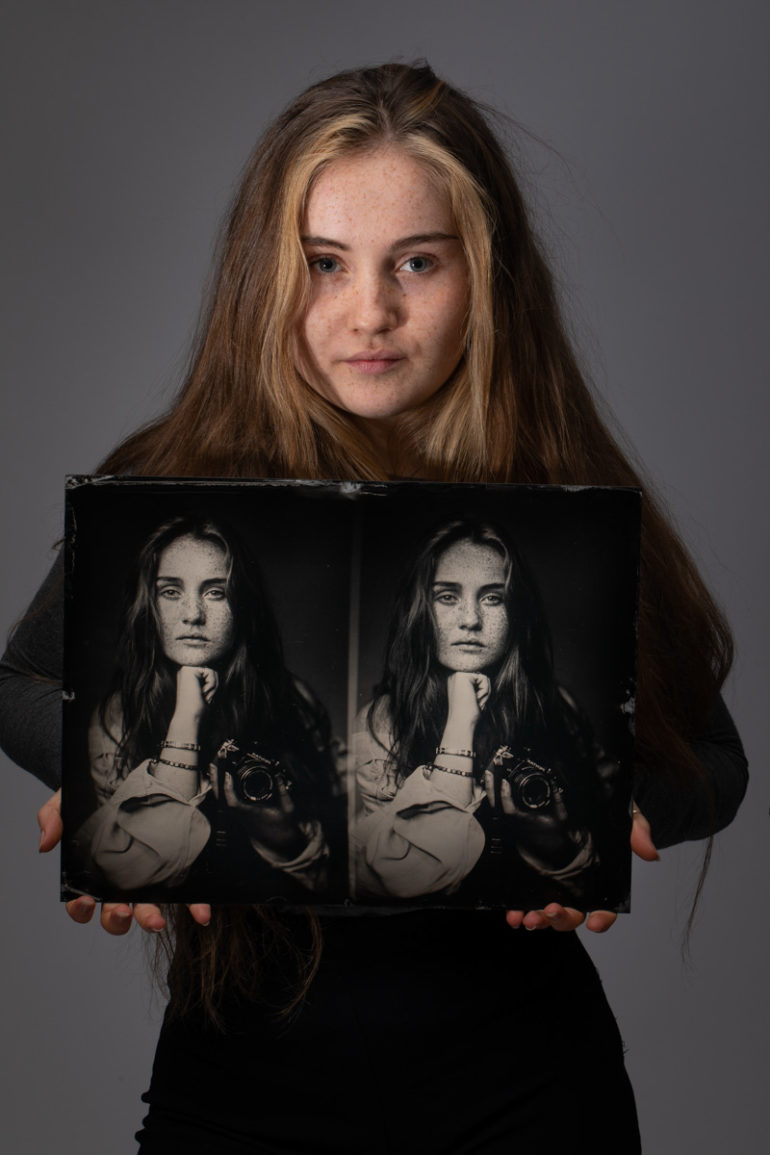
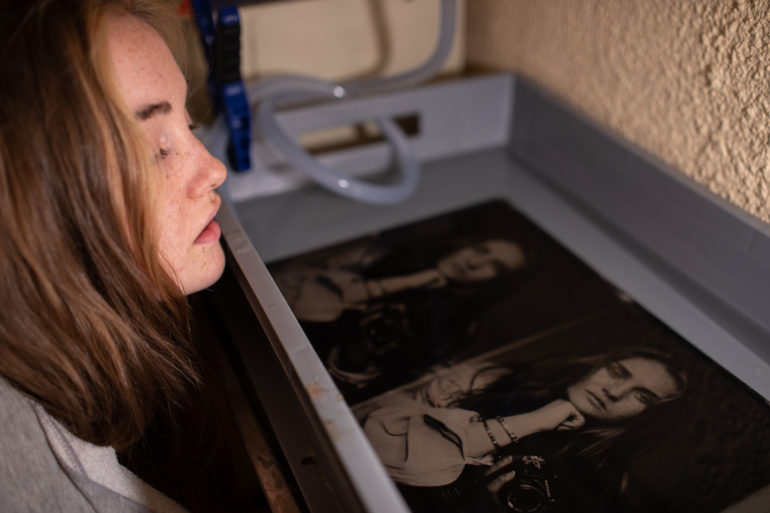
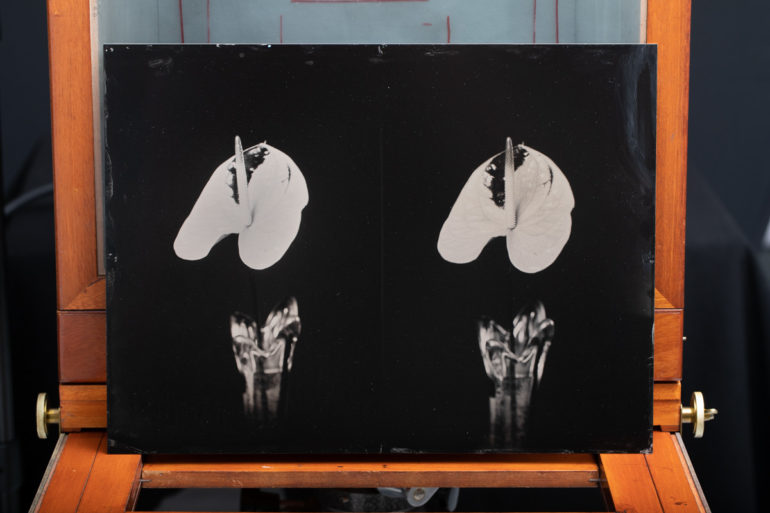
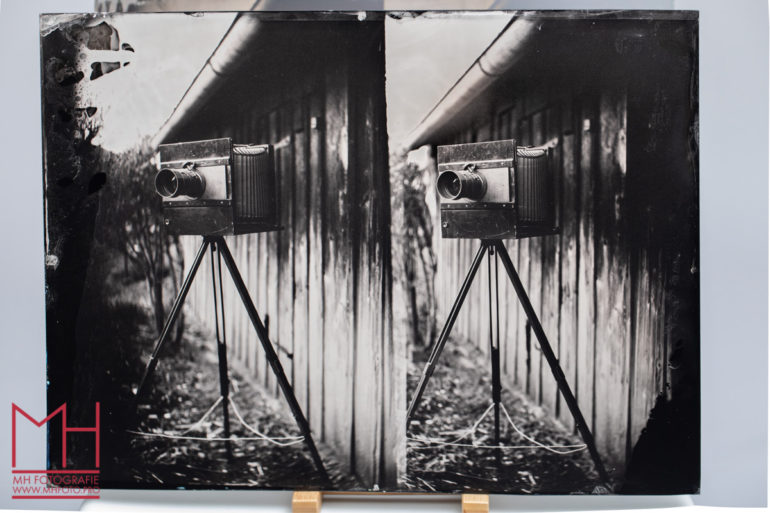
Knowing what he does now, would Markus do anything about the project differently? “Maybe not to start at all,” he joked at first, but of course, one can see where that came from. “I would not go for two Petzval lenses again. I just would look for two affordable large format lenses. If I knew, maybe I would modify one of my smaller cameras.”
Now that he has his own working stereo wet plate camera, can we expect him to start offering 3D wet plate portraits in his studio? Or put up some 3D wet plates up for sale? What’s up next for him with this epic camera, which admittedly can be difficult to surpass in the future?
“Because the snowdrop plate from the macro shot was sold in two days, I decided to make 20 limited fine art prints on luster paper this time (10 of each portrait I took). They will be printed from a company in Vienna. These guys are having the same mind about quality prints as I have with my project. I have a normal studio for wet plate portraits on all the different plate sizes. If someone wants a stereo wet plate portrait, I will do that too. However, the planning for such a portrait will be longer, because I would like to have a finished setup before the customer comes to my studio so he doesn’t have to wait to long for his portrait.”
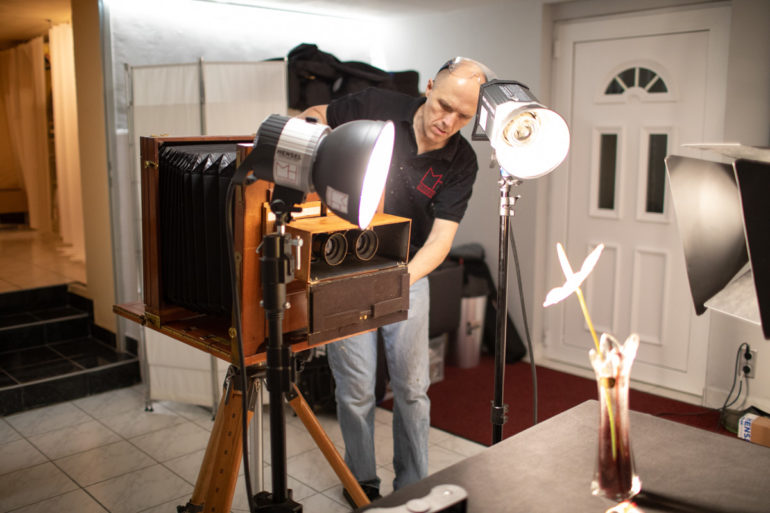
“I’m never planning to outdo another project. When it happens, it happens. I’m looking forward to do more portraits in the future and other creative things on wet plates. There will come some fun projects and videos, but this time the focus is on the fun side. I had a conversion with another analog photographer from Vienna last week and I think we can do something fun together. A friend is visiting Vienna for some days and then we will do also a little project together. So there are some surprises waiting and they will be fun.”
“I never intended to do such a big and complicated project. It just happened. But people who know me, know that I can’t let go when I start something, I have to finish it. And I‘m having a hard time with myself to do something not as good as I would be able to do it. That’s why these things are happening to me so often. And that’s who I am.”
Don’t forget to check out Markus Hofstaetter’s blog and YouTube channel to learn more about his wet plate photography projects.
All images used with permission and pitched to the Phoblographer


